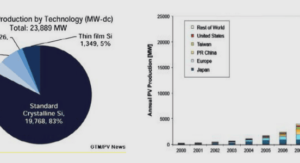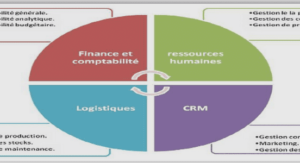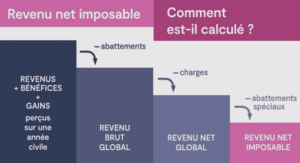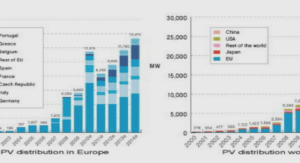Trois essais empiriques en économie de la santé et du travail
Empirical strategy To assess the effect of the presence of the one-day waiting period, we adopt a difference-indifferences strategy. The central civil service is the treated group and the private sector is the control group. Such public-private comparisons are common in this literature: there are for instance used by D’Amuri (2017), Pettersson-Lidbom and Thoursie (2013), and to some extent by Ziebarth and Karlsson (2010). The descriptive statistics above also showed that trends on the prevalence of sick leave in each sector were similar between the two groups before the introduction of the policy in January 2012. Our main specification is the following: yi,t = α.Ti,t + β.xi,t + µi + νt + i,t (1) The dependent variable yi,t is the dummy of employee i being absent from work for health-related reasons during her reference week of quarter t. It is a prevalence. Regressions are run for the dummy of all spells, but also for dummies of each of the 6 duration category spells, as described in Section 2.2. The treatment dummy Ti,t is the presence dummy of the one-day waiting period for sick leave in the central civil service. The group dummy Ci,t is the dummy of employee i belonging to the central civil service at time t. Ti,t stands for the group dummy which is interacted with years 2012 and 2013: Ti,t = Ci,t × 1[2012 Q1 ≤ t ≤ 2013 Q4] (2) α is the coefficient of interest. It captures the causal effect of the treatment, which is the presence of the one-day waiting period for sick leave. xi,t stands for the group dummy Ci,t, as well as the socio-demographic and working conditions controls that may explain health-related absences and that are available in our data set. We include gender and age (through a spline function of age interacted with gender), a triple interaction of being in a couple, having a child under 6 and gender, the educational level and diploma, the professional category, the sector of activity, the type of contract, the number of working days during a usual week, the categorized paid vacation time per year, the housing occupation status and an interaction of the calendar quarter of the year with the sector.16 µi is an individual (employee) fixed effect. It controls for unobserved time-invariant individual-specific heterogeneity. Such fixed effects enable us to assess the effect of the policy using only the within variations. The inclusion of fixed effects increases the plau16Wage is not in the covariates, as we a keep a unique value per employee, which is thus time-invariant.
Empirical strategy
sibility of estimation consistency in case non-response is affecting the common-trend assumption, as shown by Lechner, Rodriguez-Planas and Kranz (2016). This is almost never done in studies that use survey data and that are related to absenteeism. For instance, neither Ziebarth and Karlsson (2010, 2014), nor Goerke and Pannenberg (2015), nor D’Amuri (2017) use them. Puhani and Sonderhof (2010) use them in robustness tests that most often lose significance compared to their preferred specification. The impact of the inclusion of fixed effects is studied in subsection 5.3. νt is the time effect of the quarter, from 2010 Quarter 1 to 2014 Quarter 4.17 i,t is a heteroskedastic error term, whose variance is also clustered at the employee level.18 4 Results 4.1 Treatment effects for spells of different durations Table 3 presents the results for the main specification. The regressions yield results that confirm what was suggested by the descriptive statistics. Regarding the prevalence of all sick leave spells, no effect is found. 9 The coefficient regarding the prevalence of 2-day spell is negative and highly significant, but this is not the case for the two other categories of spells inferior to one week. The coefficient for 2-day spells has to be compared to the mean value of 2-day spells in the central civil service when the policy is not in place, which is 2.93‰. This implies a decrease of 63% of 2-day spells due to the one-day waiting period. For 1-day spells, the coefficient is not significant. The absence of a negative effect might come from their shortness, which makes it particularly easy to report them to the employer as leave for other reason than sick leave, like days off,19 or not to report them. Due to this layer of hidden action regarding the reporting of sick leave, very short health-related absences can remain unaffected by the one-day waiting period. We would expect a negative coefficient if we were considering 1-day sick leave (as declared to the employer) rather than 1-day health-related absence. For 3- to 7-day spells, the coefficient is also not significant. Due to the one-day waiting period, employees may be reluctant to begin sick leave. However, when the sick leave is taken, its duration may increase costlessly. For example, sick leave which would last 2 days lasts 3 days. Similarly, sick leave which would last 3 days lasts 4 days, and so on. The impact on the prevalence of intermediate duration is therefore unclear. This may explain why we do not get a clear-cut effect on these spells while we get one on 2-day spells. Regarding the prevalence of long-term spells, the three coefficients are positive. It is significant for 1- to 3-week spells, as suggested by the descriptive statistics. The prevalence of 1- to 3-week spells is 3.40‰ in the central civil service when the policy is not in place. It implies an increase of 54% due to the one-day waiting period. It is non-significant for the two categories of spells over 3 weeks, which may concern mostly serious diseases. Overall, since the prevalence of long-term spells is higher than the prevalence of shortterm ones, the prevalence of all sick leave spells is driven more by the long-term spells, which explains why the coefficient for all sick leave spells is positive. To gather further insights, we separately interact the treatment dummy with years 19In some administrations, such as customs, there even exists leave for very short indispositions. In the particular case of customs, the French highest Court of Administrative Justice (Conseil d’État) stated that the one-day waiting period did not apply to this leave for very short indispositions (Conseil d’État, 2013).
Results
This more detailed table yields overall the same results as the previous one. The two coefficients for 2-day spells are still very significant. The effects are also of the same magnitude each year. The main difference with the previous table lies in the coefficient for 1- to 3-week spells, which is lower in 2012 than in 2013. It is not significant in 2012, whereas it remains significant in 2013. This latter point might indicate that the increase in the prevalence of long sick leave did not take place immediately after the implementation of the policy, but required some time to reach its full effect, as seen in the descriptive statistics. We also present in Appendix D the interactions of the treatment dummy with each quarter of 2012 and 2013 (see Table D.I). The coefficients for 2-day spells are always negative and are significant each Quarter 1 and Quarter 3. The coefficient for 1-day spells and for 3 to 7 days spells are sometimes positive, sometimes negative and are never significant. The coefficients for 1- to 3-week spells are all positive save one, and two of them are significantly positive in the first two quarters of 2013, during the second year of implementation of the policy. The coefficient for longer absences are sometimes positive, sometimes negative and all save one are not significant. Overall, these results corroborate what was found in Table 4. The global picture put forward by the descriptive statistics is therefore confirmed by the econometric analysis. The presence of the one-day waiting period induces a decreased Chapitre 1 56 prevalence of short-term absences, an increased prevalence of long-term absences, and an unchanged total prevalence. The underlying mechanism suggested by these results is a decreased incidence of sick leave and an increased duration of spells. This is consistent with what was found by Pettersson-Lidbom and Thoursie (2013) in a similar context in Sweden where a one-day waiting period was repealed. Their « major point […] is that the reform made individuals start new spells to a larger extent but that ongoing spells became shorter ». The explanation of the decreased incidence is straightforward: the cost of starting a spell has a deterring effect on doing so. Explanations of the increased duration of spells are subtler. Intuitively, we have in mind three theoretical mechanisms. First, a rational forward-looking explanation. Starting a new sick leave spell implies paying only a fixed cost, for sick leave up to 3 months. Once a spell is started and the first fixed cost is paid, a forward-looking employee prefers to stay longer on sick leave so that the probability of getting sick again decreases, in order to avoid paying this fixed cost a second time. This results in an increased duration of spells. This explanation is put forward by Johansson and Palme (2005), Paola, Scoppa and Pupo (2014) and Eliason, Johansson and Nilsson (2019). Second, a health capital explanation. The one-day waiting period deters the employee from starting a sick leave. Consequently, the policy would induce a degradation of health capital. After a certain time period, sick employees are forced to stop. Their sick leave spells are longer, due to a poorer state of health. Such an adverse consequence of presenteeism would explain20 why the increase in 1- to 3-week spells is observed only with a delay, contrary to the decrease in 2-day spells which is observed instantaneously. As for the first explanation, this second one is dynamic. But contrary to the first explanation, the increased duration is suffered, and not chosen. Third, there is a behavioural and static explanation. The one-day waiting period may be seen as a deductible: the employee pays the cost of the first day, but nothing else until 3 months in our setting. This deductible may be seen as unfair. Consequently, the employee may be tempted to compensate for this perceived unfairness by increasing the duration of her 20Note that this explanation is not in line with the results of the articles that have studied a 1997 German reform. If health capital mattered at that time in Germany too, the two opposite changes in the distribution for short and long spells would arguably also be present in this simpler reform with a uniform decrease in the replacement rate. Yet, no health degradation was observed by the studies that carefully examined it (Ziebarth and Karlsson, 2014; Puhani and Sonderhof, 2010). sick leave spell, to enjoy more leisure time.21 The fact that the measure was continuously and unanimously criticized as unfair by labour unions provides credible grounds for this explanation. This suggests that this feeling of unfairness was widespread and might have been sustained over the two years of implementation of the measure. The effects we found are also in line with a small body of empirical literature focusing on deductibles in car insurance (Dionne and Gagné, 2001; Miyazaki, 2009; von Bieberstein and Schiller, 2017), which finds that a higher deductible may lead to a higher reported cost of car crashes.
Heterogeneous effects
In the following, we explore the possible heterogeneous effects by covariate. We interact the treatment dummy with various covariates related to socio-demographic characteristics and working conditions.23 Results are presented in Table 5. Each column summarizes a unique regression. A coefficient can be interpreted as the effect of the associated covariate on the intensity of the reaction, with the effect of other covariates on the intensity being held constant, even if there is a correlation between these covariates. Three covariates significantly change the intensity of the reaction: two related to sociodemographic characteristics (gender and age) and one related to working conditions (the number of working days during a usual week24). These three covariates change the intensity of the decrease in 2-day spells: being a woman, being younger or usually working 21Voss, Floderus and Diderichsen (2001) refer to a Danish study which has similar results to ours and puts forward this explanation: « In Denmark, the introduction of a [qualifying day] in 1983 was followed by a clear decrease in short-term sick-leave events (1-3 days) and to some extent an increase in longer sick-leave events (>4 days). One explanation from the authors was that some people might compensate with an extra day of sick-leave if the [qualifying day] was experienced as unreasonable. ». 22Dionne and Gagné (2001) do not mention how the cost of car accidents per individual is affected by a higher deductible, but only that the cost per car accident increases. In our case, we have more detailed results. Not only are our findings consistent with a longer spell duration (whose equivalent in car insurance is an increased cost per car crash), but also we focus on the total prevalence (whose equivalent in car insurance is the average cost per individual) and we do not find a significant decrease. Hence, the classic deterrent effect of the deductible on the incidence of sick leave (whose equivalent in car insurance is the probability of claims) would be fully offset by the increased duration of sick leave spells. 23Most covariates are significantly correlated with absenteeism levels over the studied period. See Table C.I in Appendix C for pooled OLS regressions over the 2010-2014 period. 24In the survey, both the number of working days during a usual week and during the reference week are available. We use the former to decrease concerns of endogeneity with the treatment. More generally, the need to use non-endogenous covariates led us to consider working conditions during a usual week and not during the reference week. This drastically decreases the number of suitable covariates. Linear regressions with individual fixed-effects. Cluster-robust standard errors in parentheses ∗ p < 0.10, ∗∗ p < 0.05, ∗∗∗ p < 0.01 Note: Wage is expressed in thousand euros per month. fewer days per week independently implies a higher decrease. In addition, being a woman also increase the intensity of the increase in 1- to 3-week spells: women who hence tend to react more, regarding both short-term and long-tern spells. Moreover, old employees would tend to decrease 1-day spells instead of 2-day spells, compared to young employees, as the two corresponding coefficients have opposite signs but similar absolute value. Regarding gender differences, the two reactions are higher for women, though the change in total prevalence is eventually not significant, and its sign points towards a higher reaction for men. In the literature, results on gender differences regarding behavioural responses to monetary incentives for sickness absence are far from being unanimous. Some authors find than men react more strongly than women (Johansson and Palme, 2005; Ziebarth and Karlsson, 2014) whereas others find the opposite (Paola, Scoppa and Pupo, 2014; Pettersson-Lidbom and Thoursie, 2013) or find no difference (Puhani and Sonderhof, 2010). Several factors might explain why responses to the one-day waiting period policy along with age, gender and number of working days during a usual week are heterogeneous. For age, young employees may be more ready than old employees to report 1-day healthrelated absences to their employers as leave for other reasons than sick leave, avoiding consequently to take 2-day health-related absences (less easy to report as leave for other reasons than sick leave). Young employees would hence make more use of their reporting choice. For gender, we find that the policy affected more the prevalence of short-term spells and of longer spells for women. In other contexts, different conclusions were drawn for gender, which calls for caution with the external validity of these results. For the number of working days during a usual week, the explanation may be that a shorter working week increases the degrees of freedom of the employee regarding her weekly schedule. It is easier for her to shift the day dedicated to illness recovery to a non-working day. Wage is not a determinant of the intensity of the reaction. Although the one-day waiting period is a monetary incentive, the penalty is proportional to the wage. The relative loss is thus identical whatever the wage. This may explain why employees with different wages do not react differently, other observable characteristics being held constant.25 4.3 Switch on and switch off A notable feature of the policy under study is its short period of enforcement, since it was repealed exactly two years after its implementation. As noted by Puhani and Sonderhof (2010), such a feature is of particular interest in a difference-in-differences approach. Indeed, this approach relies on the common trend assumption. Without treatment, the two groups are assumed to evolve similarly. With a single switch, it can be difficult to test whether any estimated effect could come from a violation of this assumption. For instance, even if the studied policy had no real effect, a significant estimated effect might come from another simultaneous event going in the same direction, and of which the researchers would be unaware. When the studied policy implies both a switch on and a switch off, we can be more confident in the fact that we have effectively assessed the causal impact of the policy, if we find that both estimated effects have opposite signs and are of similar magnitude. In the latter example, it is indeed more unlikely that for 25When the treatment dummy interacted with the wage is the sole interacted term, a lower wage implies a significantly stronger decrease in 2-day spells. This effect is however due to the correlation of the wage with other covariates, such as age. Chapitre 1 60 both the switch on and the switch off, there would be two simultaneous events going in opposite directions, and of which the researchers would be unaware. Cluster-robust standard errors in parentheses ∗ p < 0.10, ∗∗ p < 0.05, ∗∗∗ p < 0.01 Using two successive years, effects estimated separately on the switch on and the switch off are respectively presented in Table 6, for 2-day and 1- to 3-week spells, the two most reactive categories. At first glance, all coefficients have the expected sign. For 2-day spells, the coefficients are negative between 2011 and 2012 and positive between 2013 and 2014. Only the switch off is significant due to its stronger magnitude,26 which might come from the transitory peak in 2-day spells of the central civil service in the quarter following the abolishment of the measure (see Figure 4). For 1- to 3-week spells, though the coefficients are not significant, they are of expected sign: positive between 2011 and 2012, negative between 2013 and 2014. Moreover, they are of similar magnitude.
Remerciements |





